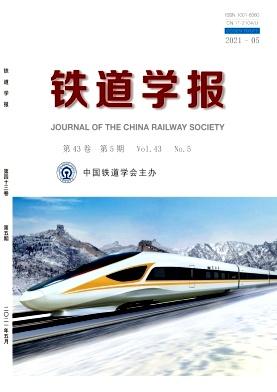Transfer Volume Forecasting Method for the Metro in Networking Conditions
Q3 Engineering
引用次数: 7
Abstract
Transfer volume forecasting is the basis of transfer station design, passenger flow organization and emergency scheme formulation. Along with rapid development of Metro networking operation in recent years, transfer volume forecasting for the Metro system in networking conditions becomes an important issue to be solved. In this paper, the transfer volume forecasting method was proposed on the basis of route choice analysis and passenger flow distribution. Taking into consideration the variables of level of service such as the ride time, number of transfers, transfer time and congestion degree and introducing in the index of angular cost value to describe the influence of network structures and route directions on route choices, the route choice model was established to analyze passengers' route choice preferences. Through equivalent ride time conversion of the above influential factors and analysis on the degree of passenger tolerance to travel time, the effective route set of all OD (Origin-Destination) pairs was constructed with the K-shortest paths algorithm. Then stochastic assignment was carried out with the MSA (method of successive averages) algorithm under constraint of the first and last train and the statistical method was put forward to calculate the transfer volumes of all transfer stations within a specified time interval. Finally, the transfer volumes of the Beijing Subway were estimated with the proposed transfer volume forecasting method. The results show that the angular cost value significantly influences the route choice behavior and the proposed method can provide good reliability and accuracy.网络化条件下地铁转运量预测方法
客流量预测是中转站设计、客流组织和应急预案制定的依据。近年来,随着地铁组网运营的快速发展,组网条件下地铁系统的运量预测成为亟待解决的一个重要问题。本文提出了基于路线选择分析和客流分布的换乘量预测方法。考虑乘车时间、换乘次数、换乘时间、拥堵程度等服务水平变量,引入角成本值指标来描述网络结构和路线方向对路线选择的影响,建立路线选择模型,分析乘客的路线选择偏好。通过对上述影响因素进行等效乘车时间转换,并分析乘客对乘车时间的容忍程度,利用k最短路径算法构建所有OD(出发地)对的有效路线集。然后,在始末班车约束下,采用连续平均法(MSA)算法进行随机分配,并提出统计方法计算指定时间间隔内各换乘站的换乘量。最后,利用提出的换乘量预测方法对北京地铁的换乘量进行了预测。结果表明,角度代价值对路径选择行为有显著影响,该方法具有良好的可靠性和准确性。
本文章由计算机程序翻译,如有差异,请以英文原文为准。
求助全文
约1分钟内获得全文
求助全文
来源期刊

铁道学报
Engineering-Mechanical Engineering
CiteScore
2.00
自引率
0.00%
发文量
6728
期刊介绍:
Journal of the China Railway Society is a comprehensive academic journal sponsored by the China Railway Society (founded in 1979, changed from bimonthly to monthly in 2011, and distributed domestically and internationally). The journal aims to comprehensively reflect the latest research progress in railway science and technology, expand the exchange and dissemination of independent original innovation results, and serve to promote the development of disciplines and the progress of railway science and technology. It mainly publishes academic papers and reviews on railway transportation, railway locomotives and rolling stock, electrification, railway communication and signaling, informatization, railway engineering and other disciplines, and pays attention to the scientificity and creativity of the papers. It is suitable for scientific and technological personnel, management experts and leading cadres engaged in and concerned with the rail transportation industry to read and refer to.
 求助内容:
求助内容: 应助结果提醒方式:
应助结果提醒方式:


